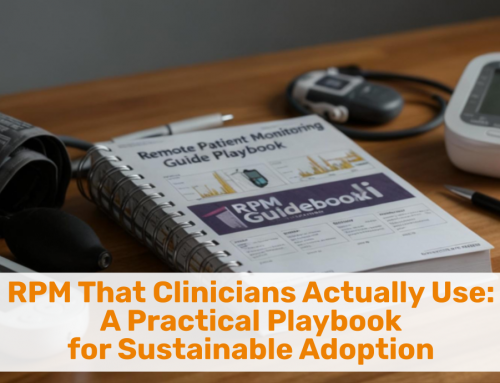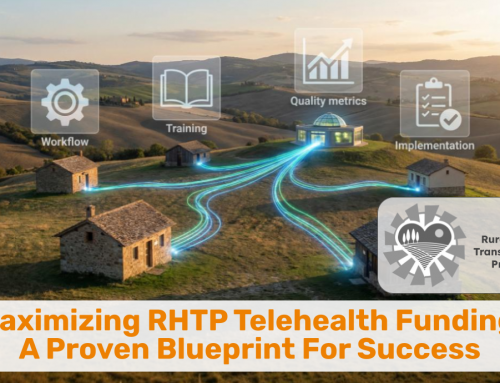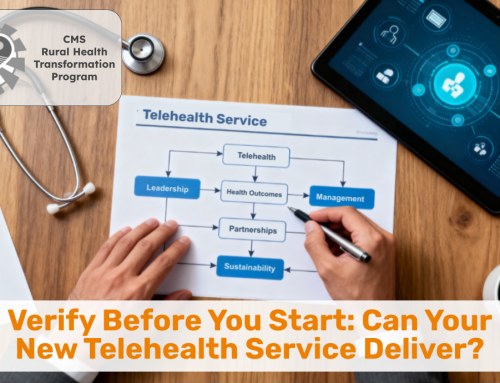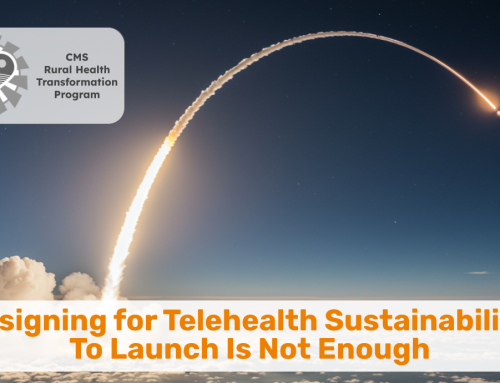While one Ebenezer Scrooge had animated conversations with three ghosts, I envisioned over the holidays what it would be like to have a spirited debate with a fictional yet vocal telehealth skeptic, whom I’ll affectionately refer to as “The Telehealth Denier.”
In my envisioned passionate but cordial dialogue, this character encapsulates the most common criticisms of telehealth — those nagging doubts that I’ve come across for over 15 years from peers, clinicians, patients, or even my own inner voice.
Here’s the conversation that challenged assumptions and underscored a critical truth that I hold dear: that many if not all of these criticisms are valid only when telehealth is implemented poorly. When designed, implemented, and supported correctly, telehealth can deliver on its promises of accessibility, efficiency, and improved care under any circumstances.
“Telehealth is Too Expensive”
Denier: “Telehealth is too expensive to implement and doesn’t actually save money!”
Me: You’re right — poorly implemented telehealth programs can be a financial sinkhole by wasting money on unused licenses, equipment, training, or even marketing efforts. Additionally, when clinicians are forced to due telehealth in such an environment, burnout and frustration is inevitable.
In reality the actual costs of telehealth implementation are miniscule when calculated on a per visit basis. Gone are the days of $72,000 annual lease licenses for a telehealth cart or $2 per visit fees for a telehealth visit. Today’s video visit licenses cost a couple of hundred dollars a year.
But organizations that invest strategically — by focusing on scalable technology, training, and targeted use cases — are indeed reaping the financial rewards (see “How Telehealth Adds to the Bottom Line”). For example, remote patient monitoring programs have reduced hospital readmissions and decreased emergency care utilization, saving millions. Cost savings are achievable when telehealth complements, rather than duplicates, existing care pathways.
Finally, I’d like to point out that the goal of telehealth is not to save money – at least not for the provider organization. The parties that actually save money are actually the payor (by reducing avoidable utilization through timely access to care and continuity of care) and the patient (avoiding transportation cost, lost wages, or child care cost).
Telehealth Worsens Healthcare Disparities
Denier: “It worsens healthcare disparities!”
Me: Especially for rural communities the reliance on digital connectivity (and digital literacy) is a concern. But I would argue that by not offering telehealth, the healthcare disparities are worsened even more. Unless the alternative is a mobile clinic, forcing everyone to take at least 2 hours off from work and get in a car to drive 20, 30, 40 miles creates a healthcare disparity in itself.
In addition numerous successful programs are addressing this problem head-on. Initiatives like broadband expansion grants and digital literacy workshops have brought telehealth to underserved populations. In fact, some rural health providers now use telehealth to connect specialists with patients who would otherwise travel hours for care.
When inclusivity (e.g., through community access points in schools, libraries, EMS stations, or fire stations) is considered part of the broader system design, telehealth will bridge gaps rather than widen them.
See “Rural Telehealth: Beyond Video Visits” for examples how telehealth can enhance access to care in rural areas, addressing concerns about healthcare disparities.
Patient Privacy and Security are at Risk
Denier: “It compromises patient privacy and security.”
Me: Privacy breaches are a real risk, especially when corners are cut. But robust telehealth platforms prioritize security with encryption, multi-factor authentication, and compliance with regulations like HIPAA. The key is choosing solutions that prioritize data integrity. Patients must also be educated about their rights and the steps being taken to protect their information. With these safeguards, telehealth can maintain — and even enhance — patient trust.
One benefit of telehealth that is often mentioned to me is the stigma around behavioral health services. Especially in small communities, with telehealth, a patient’s easily recognizable car will not be seen in the parking lot of the “shrinks”, thereby improving privacy. You’re also seen in the waiting room or in the hallway.
And don’t get me started on the privacy risks of fax machines in “traditional” clinical offices…



“Doctors Don’t Like Using Telehealth”
Denier: “Doctors hate using telehealth and get burned out.”
Me: One of our key tenets of successful telehealth is that competence begets confidence which creates a great experience for clinicians and patients alike. And competence is achieved through thoughtfully designed workflows, clinician- and patient-friendly technology, adequate and timely training (for clinicians and patients), and easy access to qualified support.
Simply speaking burn out is the result of stress resulting from a disconnect between what’s expected and what one is capable of doing. Even small doses of clinician trainingcan do wonders.
One of our clients, a rural health clinic, has long had paid licenses for one of the leading, easy to use video visit solutions, but all the clinicians were doing “phone telehealth”, because no one ever trained them in how to access and use the solution.
Another one of our clients, a regional designated agency for behavioral health services, took the next step and implemented AI-enabled ambient listening capabilities. The solution now automatically generates draft clinician notes that greatly reduces the administrative burden.
When technology serves them, physician satisfaction rises.
See “Setting the Telehealth Keystone: Clinician Engagement” and “Five Principles of Successful Telehealth Adoption” for further discussion.
“Remote Care is not Quality Care”
Denier: “Remote diagnoses are less reliable.”
Me:If you are a clinician, ask yourself: when was the last time that a physical exam truly made a difference in the subsequent care (i.e., you would have missed the diagnosis, or you would have not ordered a test to follow a suspicion)?
I’m not a clinician, but my view was shaped 12 years ago by a primary care country doc with 30+ years of experience who told me that he could not remember when listening to the patients lungs or heart truly made a difference. In most cases he would have ordered an x-ray or a referral to a cardiologist solely based on the patients description of symptoms anyway.
In another example, a rural nurse practitioner who readily embraced telehealth (sometimes out of necessity due to Covid, forcing her to practice from home) not only “diagnosed” colon cancer in a 40-something year old (by urging him to get a colonoscopy), she also correctly “diagnosed” a stroke based on the 90-year old patient’s appearance and description of symptoms, referring her to urgent care for evaluation.
Of course there are limitations when a physical exam is not available, but already often in healthcare we say that “we don’t know for certain” and order further exams or refer to specialists for the next level of evaluation. So why not with telehealth? “I cannot make a confident assessment over video, so I need you to come into the office.”
Actually with proper “virtual exam training”, it is actually amazing how much can be obtained using simple but effective techniques to get more insights than from just a video call (or phone call).
I’d be remiss not to point out that in general the “reliability” of diagnoses based on an office visit alone is extremely variable, telehealth or not. Imagine going to three primary care doctors with the same symptoms on the same day, and chances are that there will be great variation between the advice given, the test ordered and the medications prescribed.
Conclusion
Of course this conversation was easy because I did not have to address the inevitable rebuttal or disagreement. Still, I hope you found this mildly entertaining and wildly informative.
Yes, there are issues with telehealth. As there are issues with “in-person only” access to care during normal clinic hours with weeks or months of wait times.
What I have found is that most complaints are actually diversions to distract from the unfortunate truth that the clinician simply does not want to do something so “radically” different.
The secret lies in a thoughtful implementation that engages, empowers, and supports clinicians and patients to have the best possible experience.
What do you think? What are the challenges holding telehealth back in your organization and what ways have you found ways to overcome them? Share your thoughts in the comments or let’s start a conversation.








To receive articles like these in your Inbox every week, you can subscribe to Christian’s Telehealth Tuesday Newsletter.
Christian Milaster and his team optimize Telehealth Services for health systems and physician practices. Christian is the Founder and President of Ingenium Digital Health Advisors where he and his expert consortium partner with healthcare leaders to enable the delivery of extraordinary care.
Contact Christian by phone or text at 657-464-3648, via email, or video chat.






